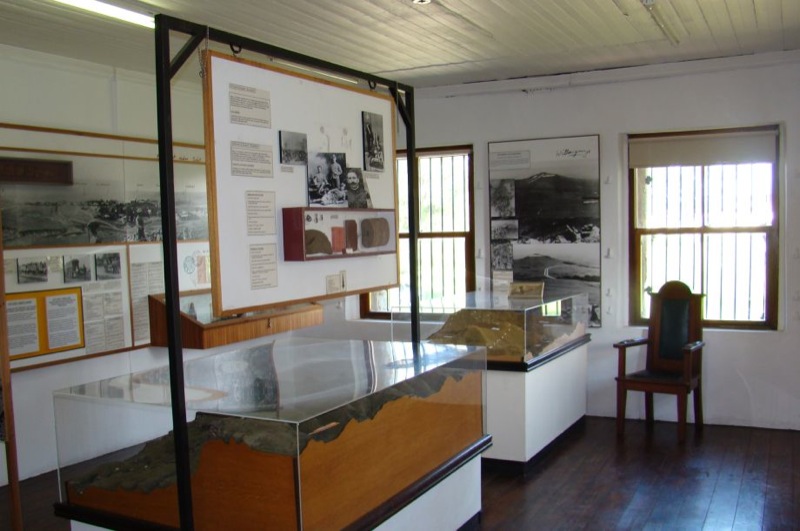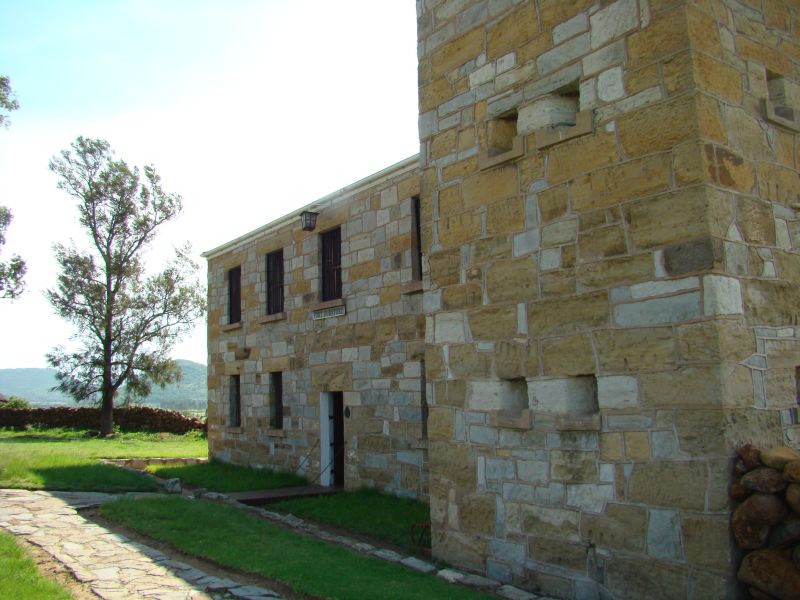Fort Durnford is a museum with many interesting displays including fossils, Iron Age and Stone Age items, old wagons and models showing where many of the battles in the area took place. They also showcase one of the biggest collections of bird eggs.
Fort Durnford was constructed as a frontier post after an alarm caused by the Langalibalele Rebellion of 1873. Strategically placed on an eminence above the old military post at the drift, with an extensive outlook to all quarters, the fort is a substantial rectangular structure of local sandstone, with walls 0.6m (2 feet) thick rising to probably 9m (30 feet). There are two square towers – one to the south-east and one to the north-west. There are heavily barred windows throughout and numerous loopholes. The windows were originally fitted with heavy iron shutters turning on hinges spiked to the walls for closure when not manned. Today it is an old colonial defence point of considerable historical interest.
Inside the building a stone-paved hall gives entry to the body of the fort with guard-, barrack-, court- and storerooms. Off a side passage, originally closed by a grille and probably used for prisoners, there are doors to a vaulted powder-magazine and offices.
Today the fort is home to the Estcourt Museum and what was once a bastion against the Zulu is now a seat of cultural interest.
Other items of interest include an underground tank beneath the floor of one of the rooms and, in the ground floor of the north-west tower, the remains of a pit from which two secret tunnels allegedly led. One led north-west towards the military post at the drift and the other north-east exiting from the hillside, useful for bringing in supplies or providing a means of escape.




